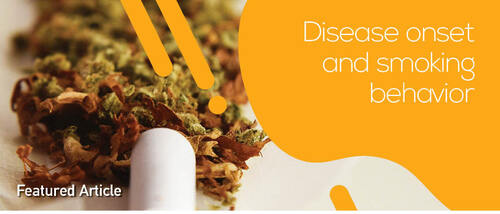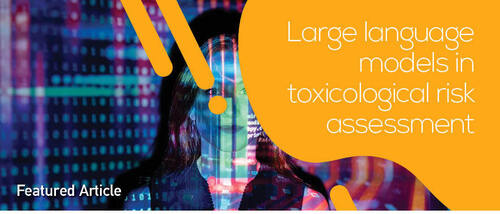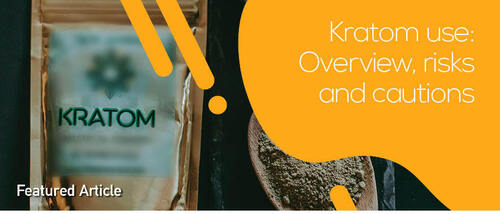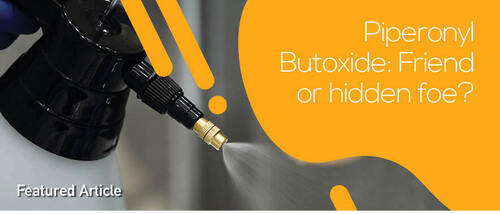Publication Ethics and Publication Malpractice Statement
Our publication ethics and publication malpractice statement is based on adherence to:
The COPE Code of Conduct and Best-Practice Guidelines for Journal Editors The ICMJE’s Recommendations for the Conduct, Reporting, Editing and Publication of Scholarly Work in Medical Journals The US NIH Standards on scholarly publishing as per the US NIH notice NOT-OD-18-011
We are also a contributor to the THINK-CHECK-SUBMIT initiative, and responsible for its adaptation into Greek and Albanian. Please refer to our Principals of Transparency Checklist for further details.
Ethics
1. Research involving human subjects
All research submitted for publication in Public Health and Toxicology, must have been carried out within an appropriate ethics framework. Research involving human subjects, human material, or human data, must have been performed in accordance with the WMA Declaration of Helsinki (as revised in 2013), and as per Good Clinical Practice.
For all research involving human subjects, informed consent to participate in the study should be obtained from participants or their guardians in the case of children. Identifying information of any form will not be published unless the information is essential for scientific purposes and the patient (or guardian) gives written informed consent on its publication. Should a manuscript report on research that provides any material that should need informed consent then an ad hoc "Statement of Informed consent" will be published in the PDF of the article alongside the ICMJE Conflict of Interest statement in the final published manuscript.
2. Research involving animal subjects
When reporting on experiments on animals the authors should indicate which institutional and national standards for care and use of laboratory animals were followed.
3. Ethics and Institutional approval
All research must have been approved by an appropriate research ethics committee or institutional review board (IRB). The Editors will seek assurances that all research has been approved by an appropriate ethics committee and ethics approval numbers and acceptance date will be requested.
4. Identification and handling of allegations of research misconduct
Both the publishers and the Editors of the journal take affirmative action to identify and prevent the publication of papers where research misconduct has occurred, including plagiarism, citation manipulation, and data falsification/fabrication, among others. All authors are requested to complete and upload ICMJE conflict of interest forms. All manuscripts undergo Ithenticate plagiarism detection after each round of peer review. In the event that the journal's publisher or editors are made aware of any allegation of research misconduct relating to a published article in their journal - COPE's guidelines will be followed when dealing with allegations. Any suspicions of breaches of the ethical oversight policy should be reported to the Editor-in-Chief. Under no circumstances the journal or its editors promote or knowingly permit any type of misconduct. The journal will address any allegation of misconduct concerning a published article, in accordance with COPE’s guidelines (or an equivalent standard).
5. Corrections & Retractions
Should authors or reviewers identify an error in a manuscript, a correction letter will be published indicating where the mistakes were made, while the original source will be immediately corrected. In general, the COPE Guidelines for Retracting Articles are followed in this case. When faced with suspected misconduct the editors are advised to follow the relevant COPE Flowcharts.
5.1 Corrections
Public Health and Toxicology will issue corrections or other post-publication updates when there are expressions of concern regarding a published content. We wish to make peer-review publishing edifying; and hence we consider to be our responsibility keeping the readers informed for any possible changes that might occur on published material. Public Health and Toxicology correction and retraction policies adhere to COPE recommendations.
5.2 Corrigendum
A corrigendum refers to a change in a published article, that the authors consider of critical impact. Authors whishing a corrigendum on their article are advised to contact the editorial office and explain the situation, though the editors of the journal are responsible for the final decision on whether the change essentially affects the article meaning or conclusions. Cases that are typical examples of corrigendum request are:
▫ Errors in table numbers or figures – given that they do not alter the conclusions of the article.
▫ Errors in statistical data that do not alter the conclusions of the article.
▫ When the list of authors needs to be updated or in case authors have been omitted or mistakenly accredited.
▫ Reference lists that need to updated or in case authors have omitted to cite material used during their research.
When proceeding with corrigenda, the original uncorrected articles remain in place, with an additional note stating that the articles have further corrections and the corresponding DOI numbers.
5.3 Erratum
An erratum is published when errors occur to the article by the publisher, during the production process. In case these errors are not tracked before publication and play a significant role in the article comprehension or meaning, authors can contact the editorial office and require the publication of an erratum. When proceeding with an erratum, the original uncorrected articles remain in place, with an additional note stating that the articles have further corrections and the corresponding DOI numbers.
Typographical errors that do not alter the meaning of the articles are not considered as significant reasons to proceed with errata or corrigenda.
5.4 Retractions
Adhering to COPE, Public Health and Toxicology abides by their guidelines and recommendations in cases of potential retraction, too. Editors will consider retraction of an article if there is evidence that findings are unreliable or have been previously published elsewhere, if the article constitutes plagiarism that was not detected in previous checks, in case of data used in the article without the appropriate authorization or in case of unethical research on human subjects, or if a major competing interest is not stated properly.
Retractions are clearly identified and linked to the original article, state the reason of retraction using simple and objective language and are published as soon as possible to minimize the potential use of unreliable data.
5.5 Post-publication discussions
Readers may comment on published manuscripts through the submission of a letter to the editor.
5.6 Author name changes on published article
Since there are a variety of reasons why an author may change their name in the course of their career and wish to update their published articles to reflect this change, Public Health and Toxicology will follow the authorship guidelines issued by COPE updating articles where authors make requests for their own name change, without the requirement for an accompanying correction notice. Pronouns accompanying author statements will also be updated as part of the name change, if required. Consequently, all metadata, pdf and HTML versions and content supplied to indexing services will be updated accordingly, by resupplying them with the new article versions.
6. Complaints and Appeals
If any authors are unhappy with the decision on their article they may appeal to the Editorial Office giving a reason why they feel the decision was incorrect. Any appeal will be reviewed by the Editor-in-Chief and one more editor with expertise on the topic and a final decision will be made. Please note that authors may only appeal once.
7. Editorial Freedom
The Editor-in-Chief has full authority over the entire editorial content of the journal. The Editor-in-Chief is supported by expert international editorial boards comprising individuals with relevant research, academic and or policy expertise. Together they make decisions on the validity and integrity of the submitted manuscripts in light of the journal's aim and scope. The Editorial board's composition is regularly reviewed, while clear guidance to editorial board members about their expected functions and duties is provided. The editorial board is also frequently updated on publication ethics and journal strategic development. The publisher is not involved in the manuscript decision-making process.
Peer Review and Manuscript Handling Process
Peer review is the critical assessment of manuscripts. All articles submitted to Public Health and Toxicology undergo double-blind peer review. Any manuscripts received for review are and must be treated as confidential documents. Reviewers are requested to report on the ethical aspects of the manuscript they are allocated to review and are requested to report also on the novelty, the impact, the statistical analysis, references and potential conflicts of interest. The Editorial Office reserves the right to handle the peer review process.
1. Plagiarism
Upon receipt of the submission, the manuscript is checked using the plagiarism identification software iTHENTICATE and the report is provided to the handling editor to assess within the initial internal review process.
European Publishing investigates into all cases of publication misconduct and as a member of CrossCheck’s plagiarism detection initiative it uses plagiarism detection software. The software checks submissions against millions of published research papers, documents on the web, and other relevant sources. If plagiarism or misconduct is found at the time of submission the manuscript is rejected immediately. Should for some reason plagiarism or misconduct be identified after publication, the case will be assessed and if needed immediate actions will be taken, including but not limited to the retraction of the article, publication of a retraction notice, etc.
2. Initial Internal Review
Assigned editorial board members and handling editors make an initial decision on the manuscript, based on the manuscript's content, novelty, sample size, manuscript preparation and quality in light of the other manuscripts currently under peer review. At this stage, the journal may either send the manuscript out for double-blind peer review, may reject the manuscript without peer review or may send the manuscript back to authors for adjustment before it is evaluated again.
3. Double-Blind Peer Review
Should the manuscript pass this initial phase of the internal review, external double-blind peer reviewing is then performed. At least two external peer reviewers are invited to provide their opinion on the manuscript. These two external peer review reports are then evaluated by a member of the editorial board or/and the Editor-in-Chief (EIC) who then makes a decision on the manuscript. In all cases, the manuscript is reviewed by at least one member of the editorial board members and the EIC.
4. External and Internal Review
Letters to the Editor and Editorials are peer-reviewed internally. All other article types are externally peer-reviewed.
5. Provenance and Peer Review
All published manuscripts have a specific provenance and peer review tab (commissioned vs non-commissioned; internally vs externally peer-reviewed) within the published article.
6. Articles submitted by Editorial Board Members
When members of the Editorial Board submit articles to the journal, they do not participate in the peer-review process or in the acceptance of the article, and they do not have access to any information regarding its review. The responsibility for overseeing the review process is completely delegated to the handling editor of the journal. A disclaimer will be issued if an article is accepted for publication.
We are also a contributor to the THINK-CHECK-SUBMIT initiative, and responsible for its adaptation into Greek and Albanian. Please refer to our Principals of Transparency Checklist for further details.
Ethics
1. Research involving human subjects
All research submitted for publication in Public Health and Toxicology, must have been carried out within an appropriate ethics framework. Research involving human subjects, human material, or human data, must have been performed in accordance with the WMA Declaration of Helsinki (as revised in 2013), and as per Good Clinical Practice.
For all research involving human subjects, informed consent to participate in the study should be obtained from participants or their guardians in the case of children. Identifying information of any form will not be published unless the information is essential for scientific purposes and the patient (or guardian) gives written informed consent on its publication. Should a manuscript report on research that provides any material that should need informed consent then an ad hoc "Statement of Informed consent" will be published in the PDF of the article alongside the ICMJE Conflict of Interest statement in the final published manuscript.
2. Research involving animal subjects
When reporting on experiments on animals the authors should indicate which institutional and national standards for care and use of laboratory animals were followed.
3. Ethics and Institutional approval
All research must have been approved by an appropriate research ethics committee or institutional review board (IRB). The Editors will seek assurances that all research has been approved by an appropriate ethics committee and ethics approval numbers and acceptance date will be requested.
4. Identification and handling of allegations of research misconduct
Both the publishers and the Editors of the journal take affirmative action to identify and prevent the publication of papers where research misconduct has occurred, including plagiarism, citation manipulation, and data falsification/fabrication, among others. All authors are requested to complete and upload ICMJE conflict of interest forms. All manuscripts undergo Ithenticate plagiarism detection after each round of peer review. In the event that the journal's publisher or editors are made aware of any allegation of research misconduct relating to a published article in their journal - COPE's guidelines will be followed when dealing with allegations. Any suspicions of breaches of the ethical oversight policy should be reported to the Editor-in-Chief. Under no circumstances the journal or its editors promote or knowingly permit any type of misconduct. The journal will address any allegation of misconduct concerning a published article, in accordance with COPE’s guidelines (or an equivalent standard).
5. Corrections & Retractions
Should authors or reviewers identify an error in a manuscript, a correction letter will be published indicating where the mistakes were made, while the original source will be immediately corrected. In general, the COPE Guidelines for Retracting Articles are followed in this case. When faced with suspected misconduct the editors are advised to follow the relevant COPE Flowcharts.
5.1 Corrections
Public Health and Toxicology will issue corrections or other post-publication updates when there are expressions of concern regarding a published content. We wish to make peer-review publishing edifying; and hence we consider to be our responsibility keeping the readers informed for any possible changes that might occur on published material. Public Health and Toxicology correction and retraction policies adhere to COPE recommendations.
5.2 Corrigendum
A corrigendum refers to a change in a published article, that the authors consider of critical impact. Authors whishing a corrigendum on their article are advised to contact the editorial office and explain the situation, though the editors of the journal are responsible for the final decision on whether the change essentially affects the article meaning or conclusions. Cases that are typical examples of corrigendum request are:
▫ Errors in table numbers or figures – given that they do not alter the conclusions of the article.
▫ Errors in statistical data that do not alter the conclusions of the article.
▫ When the list of authors needs to be updated or in case authors have been omitted or mistakenly accredited.
▫ Reference lists that need to updated or in case authors have omitted to cite material used during their research.
When proceeding with corrigenda, the original uncorrected articles remain in place, with an additional note stating that the articles have further corrections and the corresponding DOI numbers.
5.3 Erratum
An erratum is published when errors occur to the article by the publisher, during the production process. In case these errors are not tracked before publication and play a significant role in the article comprehension or meaning, authors can contact the editorial office and require the publication of an erratum. When proceeding with an erratum, the original uncorrected articles remain in place, with an additional note stating that the articles have further corrections and the corresponding DOI numbers.
Typographical errors that do not alter the meaning of the articles are not considered as significant reasons to proceed with errata or corrigenda.
5.4 Retractions
Adhering to COPE, Public Health and Toxicology abides by their guidelines and recommendations in cases of potential retraction, too. Editors will consider retraction of an article if there is evidence that findings are unreliable or have been previously published elsewhere, if the article constitutes plagiarism that was not detected in previous checks, in case of data used in the article without the appropriate authorization or in case of unethical research on human subjects, or if a major competing interest is not stated properly.
Retractions are clearly identified and linked to the original article, state the reason of retraction using simple and objective language and are published as soon as possible to minimize the potential use of unreliable data.
5.5 Post-publication discussions
Readers may comment on published manuscripts through the submission of a letter to the editor.
5.6 Author name changes on published article
Since there are a variety of reasons why an author may change their name in the course of their career and wish to update their published articles to reflect this change, Public Health and Toxicology will follow the authorship guidelines issued by COPE updating articles where authors make requests for their own name change, without the requirement for an accompanying correction notice. Pronouns accompanying author statements will also be updated as part of the name change, if required. Consequently, all metadata, pdf and HTML versions and content supplied to indexing services will be updated accordingly, by resupplying them with the new article versions.
6. Complaints and Appeals
If any authors are unhappy with the decision on their article they may appeal to the Editorial Office giving a reason why they feel the decision was incorrect. Any appeal will be reviewed by the Editor-in-Chief and one more editor with expertise on the topic and a final decision will be made. Please note that authors may only appeal once.
7. Editorial Freedom
The Editor-in-Chief has full authority over the entire editorial content of the journal. The Editor-in-Chief is supported by expert international editorial boards comprising individuals with relevant research, academic and or policy expertise. Together they make decisions on the validity and integrity of the submitted manuscripts in light of the journal's aim and scope. The Editorial board's composition is regularly reviewed, while clear guidance to editorial board members about their expected functions and duties is provided. The editorial board is also frequently updated on publication ethics and journal strategic development. The publisher is not involved in the manuscript decision-making process.
Peer Review and Manuscript Handling Process
Peer review is the critical assessment of manuscripts. All articles submitted to Public Health and Toxicology undergo double-blind peer review. Any manuscripts received for review are and must be treated as confidential documents. Reviewers are requested to report on the ethical aspects of the manuscript they are allocated to review and are requested to report also on the novelty, the impact, the statistical analysis, references and potential conflicts of interest. The Editorial Office reserves the right to handle the peer review process.
1. Plagiarism
Upon receipt of the submission, the manuscript is checked using the plagiarism identification software iTHENTICATE and the report is provided to the handling editor to assess within the initial internal review process.
European Publishing investigates into all cases of publication misconduct and as a member of CrossCheck’s plagiarism detection initiative it uses plagiarism detection software. The software checks submissions against millions of published research papers, documents on the web, and other relevant sources. If plagiarism or misconduct is found at the time of submission the manuscript is rejected immediately. Should for some reason plagiarism or misconduct be identified after publication, the case will be assessed and if needed immediate actions will be taken, including but not limited to the retraction of the article, publication of a retraction notice, etc.
2. Initial Internal Review
Assigned editorial board members and handling editors make an initial decision on the manuscript, based on the manuscript's content, novelty, sample size, manuscript preparation and quality in light of the other manuscripts currently under peer review. At this stage, the journal may either send the manuscript out for double-blind peer review, may reject the manuscript without peer review or may send the manuscript back to authors for adjustment before it is evaluated again.
3. Double-Blind Peer Review
Should the manuscript pass this initial phase of the internal review, external double-blind peer reviewing is then performed. At least two external peer reviewers are invited to provide their opinion on the manuscript. These two external peer review reports are then evaluated by a member of the editorial board or/and the Editor-in-Chief (EIC) who then makes a decision on the manuscript. In all cases, the manuscript is reviewed by at least one member of the editorial board members and the EIC.
4. External and Internal Review
Letters to the Editor and Editorials are peer-reviewed internally. All other article types are externally peer-reviewed.
5. Provenance and Peer Review
All published manuscripts have a specific provenance and peer review tab (commissioned vs non-commissioned; internally vs externally peer-reviewed) within the published article.
6. Articles submitted by Editorial Board Members
When members of the Editorial Board submit articles to the journal, they do not participate in the peer-review process or in the acceptance of the article, and they do not have access to any information regarding its review. The responsibility for overseeing the review process is completely delegated to the handling editor of the journal. A disclaimer will be issued if an article is accepted for publication.
We process personal data collected when visiting the website. The function of obtaining information about users and their behavior is carried out by voluntarily entered information in forms and saving cookies in end devices. Data, including cookies, are used to provide services, improve the user experience and to analyze the traffic in accordance with the Privacy policy. Data are also collected and processed by Google Analytics tool (more).
You can change cookies settings in your browser. Restricted use of cookies in the browser configuration may affect some functionalities of the website.
You can change cookies settings in your browser. Restricted use of cookies in the browser configuration may affect some functionalities of the website.








